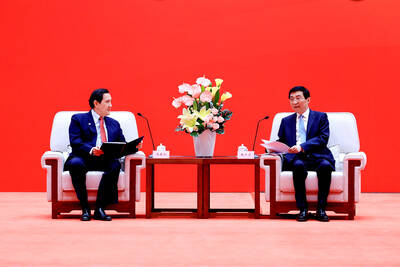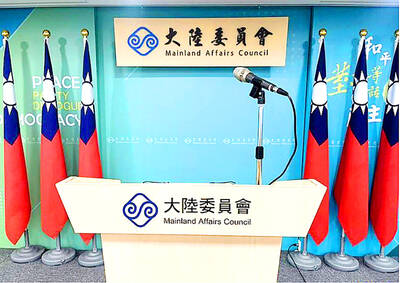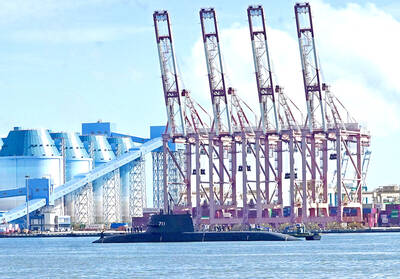The New York Times was to stop charging for access to parts of its Web site, effective at midnight last night, reflecting a growing view in the industry that subscription fees cannot outweigh potential advertising revenue from increased traffic on a free site.
The move comes two years to the day after the Times began the subscription program, TimesSelect, which has charged US$49.95 a year, or US$7.95 a month, for online access to the work of its columnists and to the newspaper's archives. TimesSelect has been free to print subscribers to the Times and to some students and educators.
In addition to opening the entire site to all readers, the Times will also make available its archives from 1987 to the present without charge, as well as those from 1851 to 1922, which are in the public domain. There will be charges for some material from the period 1923 to 1986, and some will be free.
The Times said the TimesSelect project had met expectations, drawing 227,000 paying subscribers -- out of 787,000 overall -- and generating about US$10 million a year in revenue.
"But our projections for growth on that paid subscriber base were low, compared to the growth of online advertising," said Vivian Schiller, senior vice president and general manager of the site, NYTimes.com.
What changed, the Times said, was that more readers started coming to the site from search engines and links on other sites instead of coming directly to NYTimes.com. These indirect readers, unable to access articles behind the pay wall and less likely to pay subscription fees than the more loyal direct users, were seen as opportunities for more page views and increased advertising revenue.
"What wasn't anticipated was the explosion in how much of our traffic would be generated by Google, by Yahoo and some others," Schiller said.
The Times' site has about 13 million unique visitors each month, according to Nielsen/NetRatings, far more than any other newspaper site. Schiller would not say how much increased Web traffic the paper expects by eliminating the charges, or how much additional ad revenue the move was expected to generate.
Those who have paid in advance for access to TimesSelect will be reimbursed on a prorated basis.
Colby Atwood, president of Borrell Associates, a media research firm, said there had always been reasons to question the pay model for news sites, and doubts had grown along with Web traffic and online ad revenue.
"The business model for advertising revenue versus subscriber revenue is so much more attractive," he said. "The hybrid model has some potential, but in the long run, the advertising side will dominate."
In addition, he said, the Times has been especially effective at using information it collects about its online readers to target ads to them, increasing their value to advertisers.
Many readers lamented their loss of access to the work of the 23 news and opinion columnists of the Times -- as did some of the columnists themselves. Some of those writers have such ardent followings that, even with access restricted, their work often appeared on the lists of the most e-mailed articles.
Experts say that opinion columns are unlikely to generate much ad revenue, but that they can drive a lot of reader traffic to other, more lucrative parts of the Times' site, like topic pages devoted to health and technology.
The Wall Street Journal is the only major newspaper in the country to charge for access to most of its Web site, which it began doing in 1996. The Journal has nearly 1 million paying online readers, generating about US$65 million in revenue.

CHIP WAR: The new restrictions are expected to cut off China’s access to Taiwan’s technologies, materials and equipment essential to building AI semiconductors Taiwan has blacklisted Huawei Technologies Co (華為) and Semiconductor Manufacturing International Corp (SMIC, 中芯), dealing another major blow to the two companies spearheading China’s efforts to develop cutting-edge artificial intelligence (AI) chip technologies. The Ministry of Economic Affairs’ International Trade Administration has included Huawei, SMIC and several of their subsidiaries in an update of its so-called strategic high-tech commodities entity list, the latest version on its Web site showed on Saturday. It did not publicly announce the change. Other entities on the list include organizations such as the Taliban and al-Qaeda, as well as companies in China, Iran and elsewhere. Local companies need

CRITICISM: It is generally accepted that the Straits Forum is a CCP ‘united front’ platform, and anyone attending should maintain Taiwan’s dignity, the council said The Mainland Affairs Council (MAC) yesterday said it deeply regrets that former president Ma Ying-jeou (馬英九) echoed the Chinese Communist Party’s (CCP) “one China” principle and “united front” tactics by telling the Straits Forum that Taiwanese yearn for both sides of the Taiwan Strait to move toward “peace” and “integration.” The 17th annual Straits Forum yesterday opened in Xiamen, China, and while the Chinese Nationalist Party’s (KMT) local government heads were absent for the first time in 17 years, Ma attended the forum as “former KMT chairperson” and met with Chinese People’s Political Consultative Conference Chairman Wang Huning (王滬寧). Wang

CROSS-STRAIT: The MAC said it barred the Chinese officials from attending an event, because they failed to provide guarantees that Taiwan would be treated with respect The Mainland Affairs Council (MAC) on Friday night defended its decision to bar Chinese officials and tourism representatives from attending a tourism event in Taipei next month, citing the unsafe conditions for Taiwanese in China. The Taipei International Summer Travel Expo, organized by the Taiwan Tourism Exchange Association, is to run from July 18 to 21. China’s Taiwan Affairs Office spokeswoman Zhu Fenglian (朱鳳蓮) on Friday said that representatives from China’s travel industry were excluded from the expo. The Democratic Progressive Party government is obstructing cross-strait tourism exchange in a vain attempt to ignore the mainstream support for peaceful development

DEFENSE: The US would assist Taiwan in developing a new command and control system, and it would be based on the US-made Link-22, a senior official said The Ministry of National Defense is to propose a special budget to replace the military’s currently fielded command and control system, bolster defensive resilience and acquire more attack drones, a senior defense official said yesterday. The budget would be presented to the legislature in August, the source said on condition of anonymity. Taiwan’s decade-old Syun An (迅安, “Swift Security”) command and control system is a derivative of Lockheed Martin’s Link-16 developed under Washington’s auspices, they said. The Syun An system is difficult to operate, increasingly obsolete and has unresolved problems related to integrating disparate tactical data across the three branches of the military,